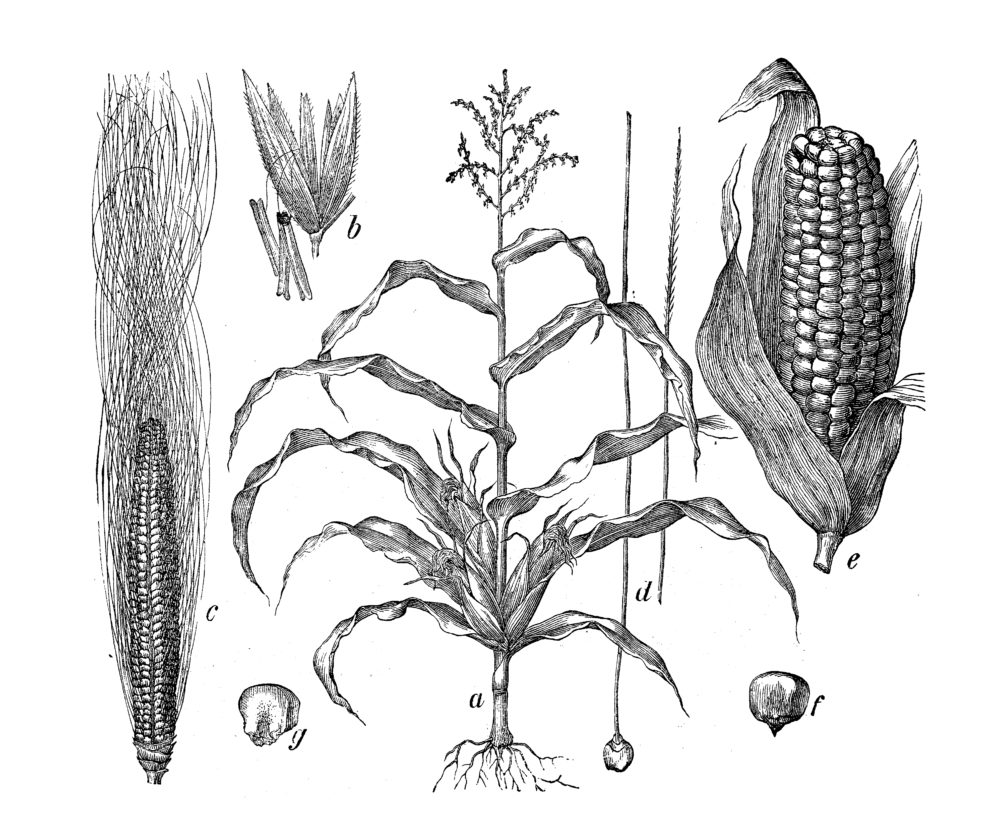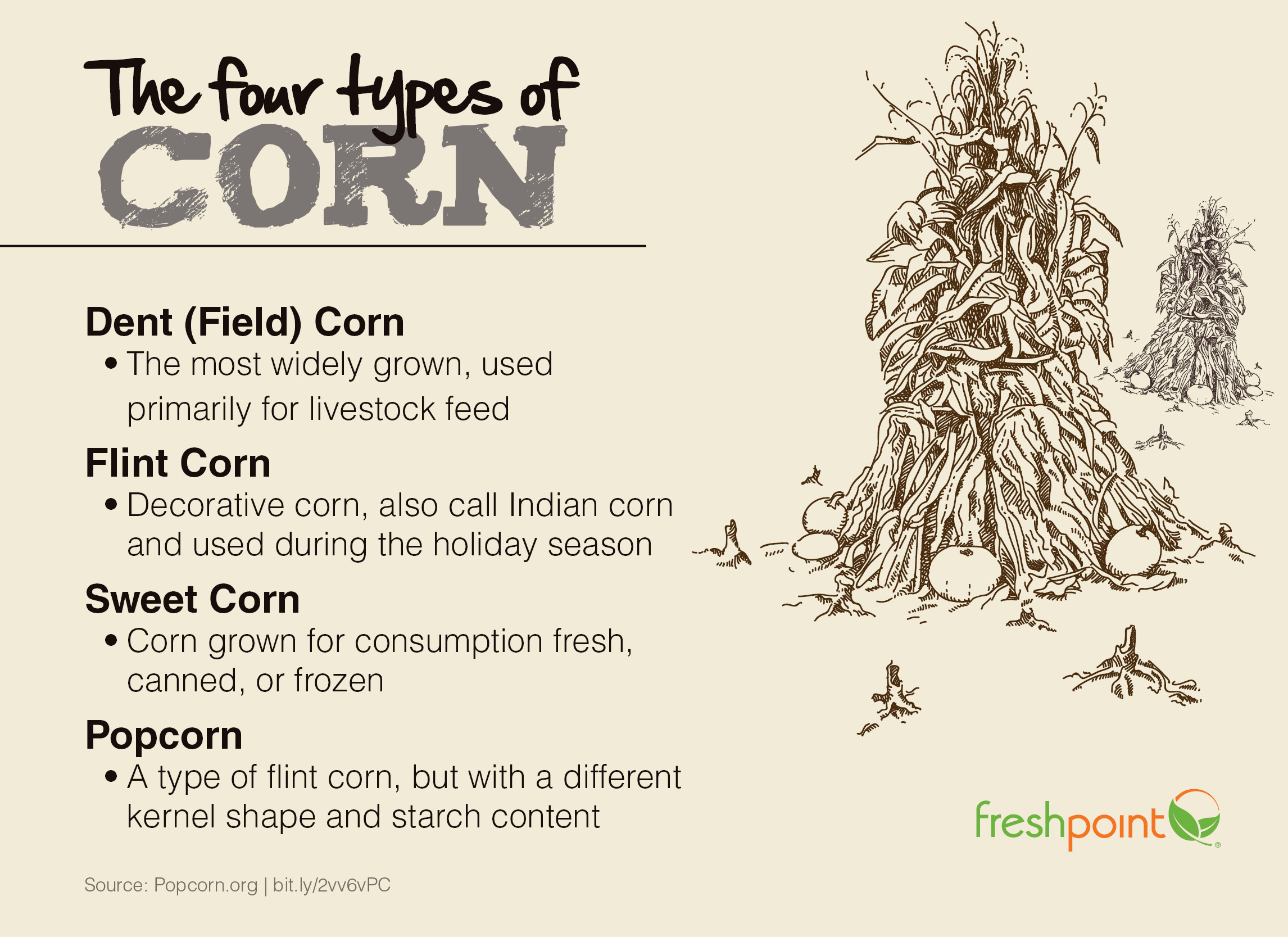
From Ancient Low-Tech to Modern Day High-Tech, the Power of Corn
From the summer grill to your holiday centerpiece, corn is perhaps the most versatile crop grown today.
It’s also one of the oldest and most sacred crops grown in the world. Thought to have been first cultivated 8,700 years in Mexico’s Central Balsas River Valley, corn, or maize, became a critically important food crop. Why? It was easily stored and provided a dependable, and much relied upon, food source for ancient cultures.

Botanists had long debated the origins, believing that modern day corn had no relation to any other living plant.
That changed in the early 1930’s when George W. Beadle, an advanced student at Cornell University, found that it had very similar chromosomes to a wild grass, Teosinte. That was in the 30’s, and has more recently been confirmed by a research project led by Anthony Ranere of Temple University and Dolores Piperno of the Smithsonian National Museum of Natural History, though they did narrow it down to a specific grass, Balsas teosinte, grown in the Central Balsas River Valley of Mexico.
As part of the research, the team discovered numerous grinding implements with residual starch still clinging to them, providing the evidence needed to show that the early civilizations had indeed domesticated corn.
So what were the ancient peoples using maize for?
Evidence indicates they were roasting whole cobs to eat, using some varieties as popcorn and grinding the kernels for food.
Modern production and consumption is much different. The vast majority grown is now used for cattle feed and ethanol production, with less than 7% of total production being used either directly or indirectly in food items.
Now let’s talk about sweet corn
Sweet corn came about from a natural mutation first discovered in Pennsylvania in the 18th century, and the first commercial cultivar was eventually released in 1779. While it remains a very popular, seasonal menu choice, consumption in the United States has been on a continual decline since 1996, from a peak of 29 pounds per person in 1996, to a current level of 21.3 pounds per person.
Through the years, scientists have sought to breed the perfect sweet variety, one that is sweet, retains its sugars, and remains tender to the bite.

There are multiple varieties, with most being one of the super sweet cultivars. Cold temperatures are the key to keeping your sweet corn sweet. Once picked, growers typically chill the ears using either hydrocooloing, forced air, and vacuum or package icing to bring the corn to the required temperature. Once cooled, the corn needs to remain as cool as possible. Once the corn hits 50 degrees Fahrenheit, the sugar conversion is accelerated by a factor of four.
While ancient in origin, corn has been become an integral part of modern life. From fuel to food, it’s hard to imagine a life without corn.
Contact your Marketing Associate about adding corn to your next order. If you are not a customer, find out how to become one today!
Article submission by Chef Daniel Snowden, the Director of Culinary Development for FreshPoint Central Florida. He has been in the produce industry years almost 20 years and loves getting geeky about food. Follow FreshPoint Central Florida on Facebook and Instagram.
Some tools you can use:
Visit freshpoint.com for our seasonal availability guides—and while you are there, check out the FreshPress, our latest market report. Place your orders online with ease at myfreshpoint.com. Did you know you can receive real-time reliable delivery alerts on the day of your delivery? Activate and subscribe at FreshPoint.com/mydelivery
Download our app and take your produce management on the go. Place orders, review flyers, watch videos…all in one spot!
Find out more details about our UBU program, and how we are shining a spotlight on food waste while making value and food safety a priority.
We buy local to strengthen regional economies, support family farms, preserve the local landscape, and to provide fresh-from-the-farm food to our customers. Local.freshpoint.com connects you to your local farmers like never before! Customize your search by zip, city, state, radius…even by crops and growing methods. Pop in your zip code and learn about our local farmers.
Socialize with us!
Did you know we are on YouTube? Head over to our page and check out our 75+ videos. Don’t forget to subscribe, and also be a part of our Bell Team—hit the little bell icon to get notifications when we upload new videos.
Follow FreshPoint, Inc. on Facebook, Twitter, Instagram, and LinkedIn…and follow The Produce Hunter on Instagram as she finds the best specialty produce at the Santa Monica Farmers Market.

